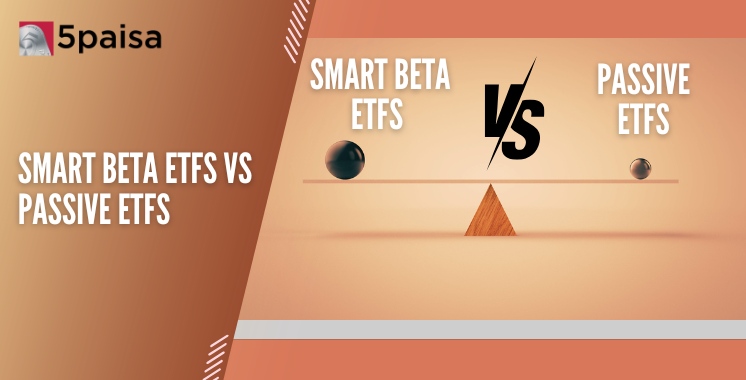Content
Exchange-traded funds (ETFs) have been a popular choice for passive investment throughout the years. ETFs are an affordable alternative to buying individual stocks for diversification and increased market exposure. Nevertheless, investors frequently wonder if they should choose passive ETFs or smart beta exchange-traded funds. Despite being exchange-traded funds (ETFs), they differ from one another.
Unlock the full article - sign in with Gmail!
Expand Your Market Knowledge with 5paisa Articles
What are Passive ETFs?
The goal of passive exchange-traded funds (ETFs) is to mimic the performance of a market index. Passive ETFs offer lower expense ratios since they hold the securities in the same proportion. Since passive ETFs seek to mimic the performance of the index, they are simple to comprehend.
What are Smart Beta ETFs?
The components of active and passive investing are combined in smart beta exchange-traded funds. The investment theory of smart beta ETFs is passive, yet their investment approach is active. For instance, not all of the index equities will be included in a smart beta ETF that tracks the Nifty 50. But only stocks that meet specific criteria, such revenue, growth, and volatility, will be included.

Passive ETFs and Smart Beta ETFs: Key Differences
Smart beta funds and passive ETFs differ in a number of ways (see table):
| Aspect |
Passive ETF |
Smart Beta ETF |
| Investment Strategy |
Follows an index with a purely passive approach |
Merges both active and passive strategies, focusing on specific factors |
| Cost |
Lower costs due to a purely passive approach |
Higher costs due to a mix of active investing methods |
| Risk-Adjusted Returns |
May underperform the market |
Offers the potential for improved risk-adjusted returns |
| Simplicity |
Easy to understand and transparent |
More complex in structure and strategy |
What Should You Opt For Between Smart Beta ETF & Passive ETF?
The decision is based on personal tastes, although both passive and smart beta exchange-traded funds (ETFs) can assist you with passive investments.
-If you want a low-cost investment choice that needs little work to manage a portfolio,
-If you need broad diversification free from guessing, or want a straightforward, hands-off approach to investing, you can choose passive ETFs.
However, you can use smart beta ETFs if you want to increase your risk-adjusted returns and are prepared to pay more for them.
-You can also choose them if you are willing to manage a little more complexity with your passive investment.
-You desire focused exposure to particular elements, such as minimal volatility and personalization.
Conclusion
You may get the best of both worlds by combining smart beta and passive ETFs. They can assist you in building a well-rounded portfolio and establishing the groundwork for sustained expansion. Nevertheless, the decision will be based on your individual objectives, risk tolerance, and the amount of time you are prepared to devote to investment management.




